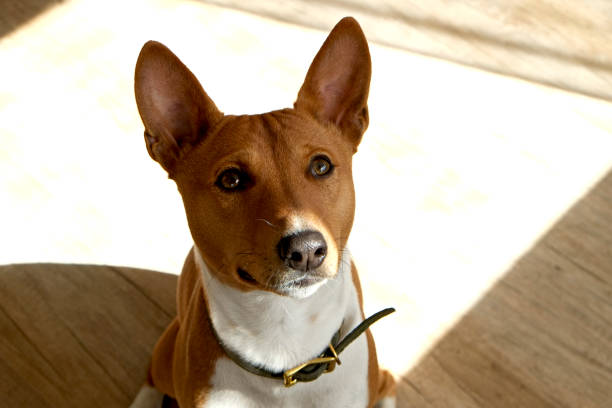The Basenji, often referred to as the “Barkless Dog,” boasts a rich history that dates back centuries. Bred for specific purposes, this unique breed carries a legacy that has left an indelible mark on its characteristics and behavior. In this article, we’ll delve into the captivating origins of the Basenji and shed light on what they were originally bred for.
1. African Roots and Hunting Instincts
Originating in Central Africa, the Basenji’s primary purpose was that of a hunting dog. This breed was meticulously bred by indigenous people to excel in tracking and pursuing game animals through dense terrains. Renowned for their agility, speed, and exceptional sense of smell, Basenjis were indispensable assets to African hunters, aiding in securing sustenance for their communities.
2. Silent Efficiency: The “Barkless” Trait
One of the Basenji’s most intriguing features is their reputation as the “Barkless Dog.” This characteristic was not bred into them intentionally; rather, it emerged as an adaptation to their hunting environment. In the dense African forests, excessive barking could alert prey or rival hunters, hindering the success of the hunt. Therefore, Basenjis learned to communicate through other vocalizations, such as yodels and howls, allowing them to remain stealthy and efficient.
3. Pack Mentality and Community Bond
Basenjis were often employed in packs for hunting expeditions, showcasing their strong pack mentality. Their ability to work seamlessly with other dogs and cooperate with human hunters underscores their role as valued team members. This pack mentality also contributes to their loyalty and affection toward their human families, making them excellent companions and watchdogs.
4. Adaptability and Modern Roles
While the Basenji’s original purpose was as a hunting partner, their adaptable nature has enabled them to excel in various roles over time. Today, they’ve transitioned into beloved family pets and show dogs, showcasing their intelligence, curiosity, and strong-willed personalities. However, their hunting instincts still persist, often manifesting in activities like chasing small animals or exhibiting keen observational skills.
5. Maintaining Tradition in Modern Times
Although the Basenji’s primary role has evolved, their inherent qualities and historical purpose continue to shape their character. Owners of Basenjis often find that their dogs retain the same agility, independence, and lively spirit that made them skilled hunters in Africa. Providing outlets for physical and mental stimulation helps keep these traits balanced and harmonious in a domestic setting.
6. What is unusual about the Basenji breed of dog?
- The Remarkable “Barkless” Trait
One of the most remarkable and well-known characteristics of the Basenji is its lack of traditional barking. Unlike most dogs that use barking to communicate, Basenjis emit a range of vocalizations that include yodels, howls, and unique sounds known as “baroos.” This unusual trait stems from their African hunting heritage, where silence was essential for stealthy hunting in dense forests.
- Grooming Habits and Cat-Like Cleanliness
Basenjis possess a strong affinity for grooming themselves, akin to a feline behavior. They have an almost cat-like dedication to cleanliness and are often seen licking themselves clean. This trait aligns with their independent nature and highlights the distinctive behaviors that set them apart from other dog breeds.
- Independent and Self-Reliant
Basenjis are known for their independent streak. This can sometimes be misinterpreted as stubbornness, but it actually reflects their self-reliant nature. This trait harkens back to their origins as hunting dogs, where they needed to make decisions quickly and act independently when tracking prey.
- Seasonal Shedding Patterns
Basenjis are known for their distinctive shedding patterns. Unlike many breeds that shed year-round, Basenjis typically experience a single annual shed, commonly referred to as “blowing their coat.” This shedding process usually occurs in the spring, resulting in a temporary increase in shedding that is followed by a relatively low-maintenance coat for the rest of the year.
- Curious and Energetic Nature
Basenjis possess a high level of curiosity and energy, often leading them to explore their surroundings with a sense of adventure. This trait can be both endearing and challenging for owners, as it requires mental and physical stimulation to keep them engaged and prevent boredom-driven behaviors.
Conclusion: A Glimpse into Basenji Heritage
In conclusion, the Basenji’s breeding history is a testament to the remarkable symbiosis between humans and dogs throughout the ages. Bred for hunting prowess and adaptability, Basenjis played a vital role in African communities while preserving their “barkless” communication style. As they transition into modern roles, their original purpose still shines through in their behaviors and instincts, allowing us to appreciate their multifaceted heritage that spans generations and continents.


